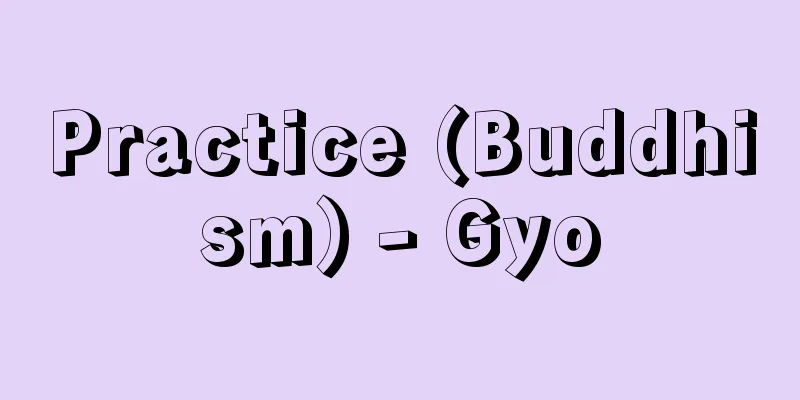Beauty exercises - Beauty exercises

|
It is a systematic physical exercise aimed at making the whole body healthy and beautiful. Usually, it is done for 3 to 10 minutes a day, and it is believed that by exercising muscles that are not normally used rhythmically and continuously, it will increase metabolism, burn excess fat, tone muscles, and stimulate the functions of the whole body, and it is practiced by many people. Called calisthenics in English, it became popular in the West after World War I, and the main trigger for this was the advancement of women into the workplace. Until then, women had been centered on the home and had a static, passive role, but this was a major transformation. This was reflected in other phenomena such as the liberation from corsets in costumes and changes in hairstyles, such as short hair and bob cuts. In Japan, with the influence of America after the Second World War, the improvement of women's social status and the spread of mass media, especially television, helped make the term appear around 1950. In 1954, NHK began broadcasting it under the title "beauty exercises," and the term quickly became popular. Nowadays, the general term "beauty exercises" is avoided, and people choose individual names that fit the purpose of beauty exercises and are chosen according to their preferences. There are a wide variety of methods and names, and new ones are constantly being created. Healthy exercises, jazz dance, yoga, tai chi, stretching exercises, juggles, aerobics exercises, and other methods that sometimes reflect fashion trends have been added, and the number of enthusiasts is increasing. [Toshikazu Yokota] Source: Shogakukan Encyclopedia Nipponica About Encyclopedia Nipponica Information | Legend |
|
全身的な健康美、身体美をつくることが目的で、組織的に構成された身体運動をいう。普通、1日3分から長くても10分程度の時間内に、日ごろ使わない筋肉の運動を、リズミカルにそして継続的に行うことによって新陳代謝を高め、余分な脂肪分をとり、筋肉の均整化を図り、全身の機能を盛んにするとされ、多くの人々に行われている。 英語ではカリステニクスcalisthenicsとよばれ、欧米で第一次世界大戦後普及したが、これには女性の職場進出が大きな引き金となった。それまでは家庭中心で、静的、受動的立場にあった女性が、大きく変革したということである。これはコスチュームでのコルセットからの解放、ヘアスタイルでのショート・ヘアやボブを中心とする断髪といった変化などと共通する現象として現れている。 日本では第二次世界大戦後のアメリカの影響による、女性の社会的地位の向上、テレビを中心としたマスコミの普及も手伝って、1950年(昭和25)ごろから登場し、54年には「美容体操」のタイトルでNHKが放映を開始、急速にこのことばも広まった。現在では、「美容体操」という総体的な呼称はむしろ敬遠されており、美容体操の目的に適合した個々の呼び名で、各人の好みで選択されるようになった。その方法や名称も多岐にわたり、次々と新しいものを生み出している。健康体操、ジャズ・ダンス、ヨーガ、太極拳(けん)、ストレッチング体操、ジャギー、エアロビクス体操など、ときにファッション性を反映する方法も加わり、愛好者を増大させている。 [横田敏一] 出典 小学館 日本大百科全書(ニッポニカ)日本大百科全書(ニッポニカ)について 情報 | 凡例 |
Recommend
Japanese Industrial Standard
…Abbreviation for Japanese Industrial Standard. B...
Earl of Shinto Shrines - Jingihaku
[Noun] Under the Ritsuryo system, this was the chi...
Appian Way - Appian Way (English spelling)
An ancient Roman national road. It was named afte...
FT - FT
《 The Financial Times 》⇒Financial Times FT [Fourie...
Potalaka
…The Pure Land of Kannon Bodhisattva. A translite...
Large blue-spotted grouper - Large blue-spotted grouper
…There are many delicious species, and they can b...
Urobilin
C 33 H 42 N 4 O 6 (590.72). Also called mesobin. ...
Cebus
…the name is a general term for the New World mon...
mawsim
…the seasonal winds that blow from the southwest ...
Daniel, Samuel
Born 1562, near Taunton, Somerset [died] October 1...
brilliant lily
...Leaves are thin and narrowly lanceolate to lin...
Lee Kuan Yew
1923‐ A politician from the Republic of Singapore....
Social Insurance Examination System
A system for reviewing disputes related to social ...
Gur (English spelling)
…The city was originally called Gur, but after th...
Stone Venus - Ishi no Venus
...Khoisan (Khoi-Khoin and San), an indigenous pe...









